Boo! Does the higher education enrollment cliff scare you? 👻 Then check out our latest tricks (and treats!) to defeat the cliff “catastrophe” mindset.
In our last blog, “Enrollment Cliff 101: The Facts About the Looming Crisis and How to Prepare,” we talked about what the higher education enrollment cliff is, why community colleges are better poised to thrive, and gave five big strategies to help safeguard your student enrollment.
Now, you know how to build retention and streamline onboarding, but what happens if you run into hiccups along the way?
Enter Interact’s first aid kit! In this blog, our leadership team offers higher education enrollment cliff corrections to keep your college’s enrollment strong.
Ready to fine-tune your enrollment strategies? Then keep reading!
1. How to Adjust Your Attitude: Why We’re Rebranding the Higher Education Enrollment Cliff
Our first trick is an attitude adjustment: We need to rethink our approach to the enrollment so-called “cliff.” First of all, we think a cliff sounds very “doomsday.” It’s hard to be positive and proactive when you’re worried about falling off a cliff. Are our only options jumping off or running away from a precipice? We think not!
Plus, the demographic drop doesn’t even look like a cliff. It’s more like a curve that’s been trending downward since 1957.
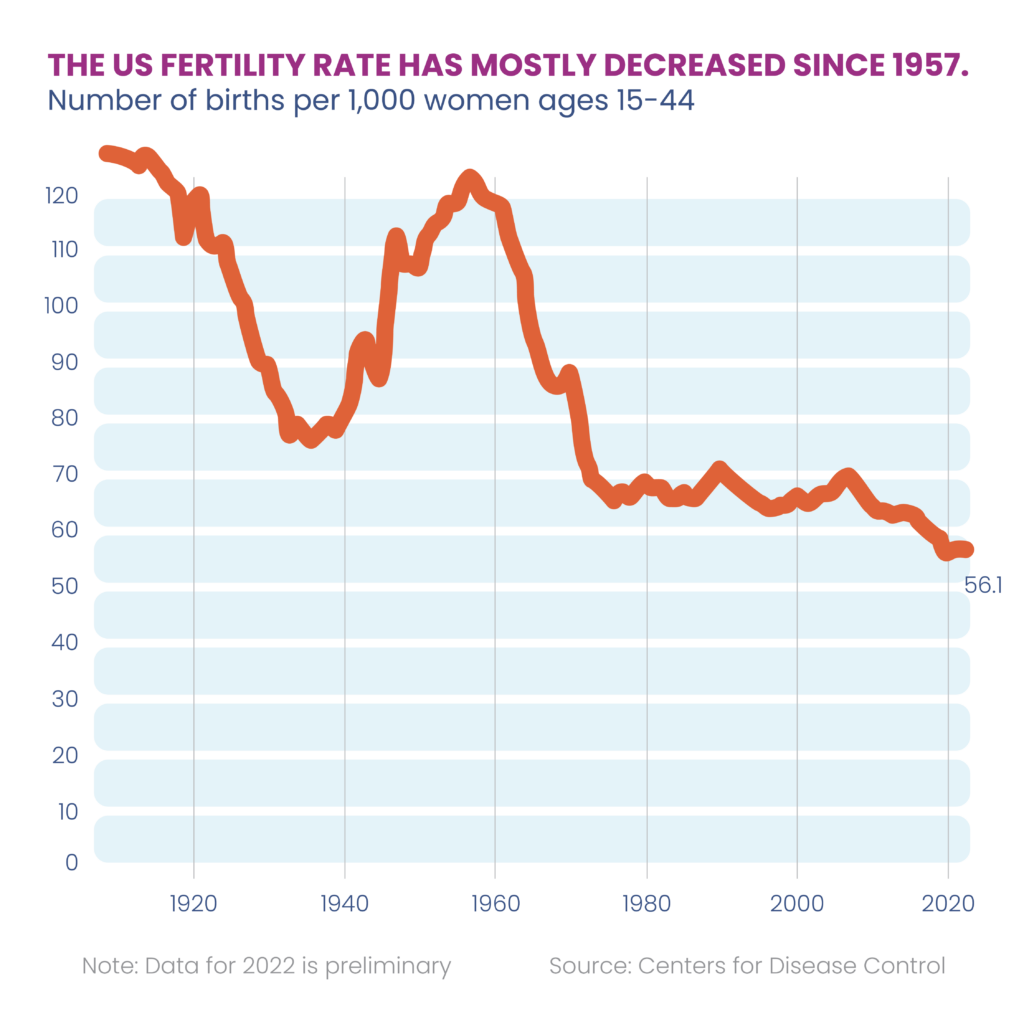
Statistics from USA Facts, How have US fertility and birth rates changed over time?
“When you look at the declining census, it’s not a cliff — it’s a steady decline,” says our CEO, Dr. Diane Walleser. “Talking about a cliff can scare people and even bring on avoidance at a time when we need to be proactive.”
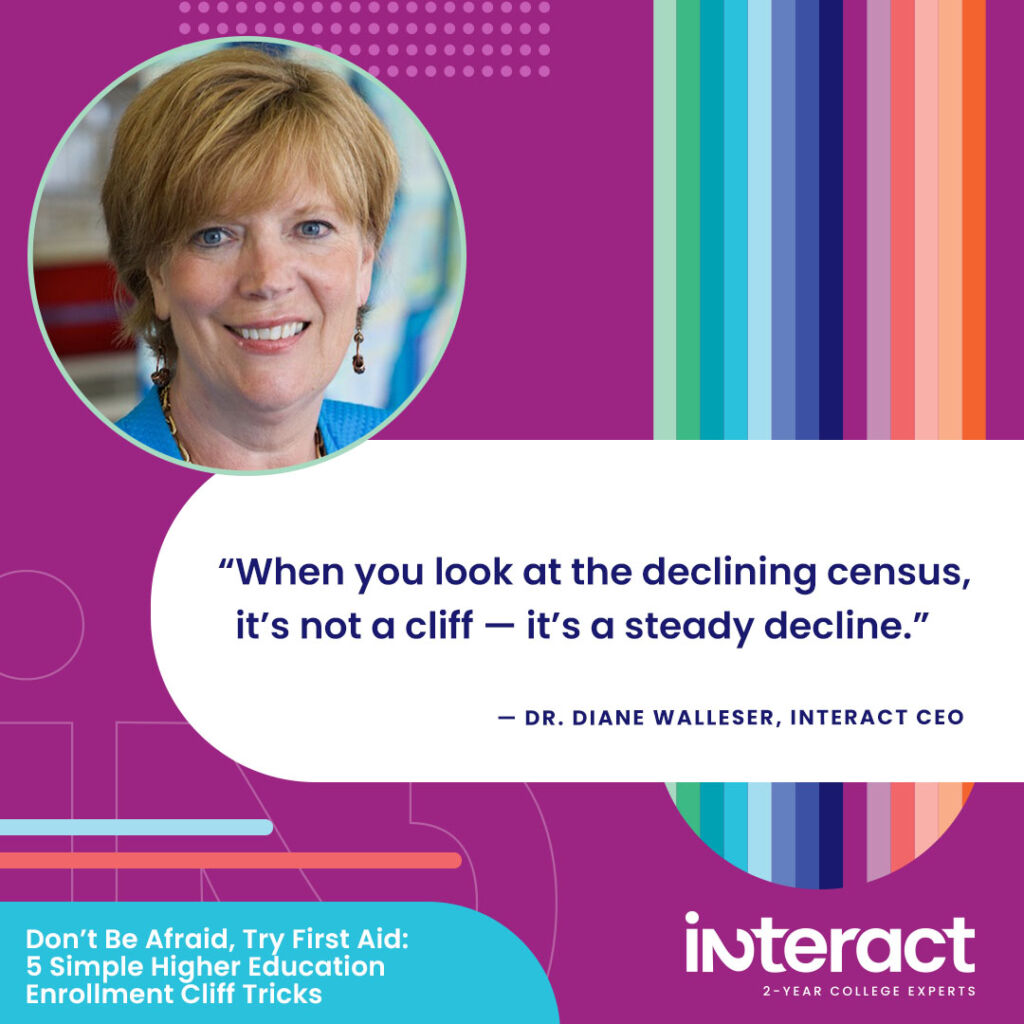
Instead, we’re thinking of the higher education enrollment cliff as a river. Sure, there are ups and downs in the current, bends in the stream, rapids, and rocks. But if you have a great rowing team, a compass, and a map, you will navigate the waters just fine.
“We can be prepared, have an alternate route, and pack a first aid kit,” says our Vice President of Account Services Lisa Kasper. “Once you start thinking of enrollment as a river and not a cliff, then we can look at our surroundings, catch our bearings, and plan where we want to go.”
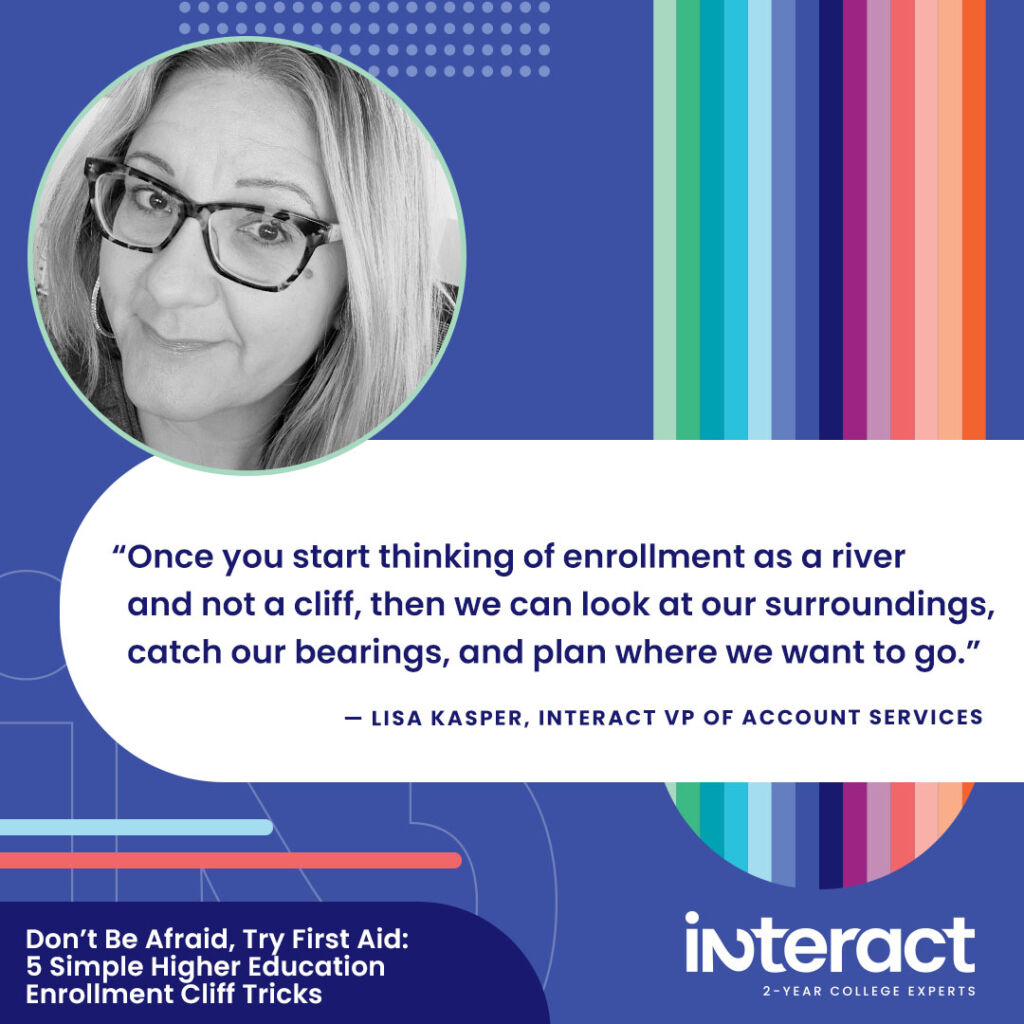
So, if you’re biting your nails over the higher education enrollment cliff, try inflating a raft and going with the flow with us instead.
2. Avoid the Blame Game and Build Collaboration in the Face of the Higher Education Enrollment Cliff
Whether you call it the higher education enrollment cliff, river, or roller coaster, change is hard. That’s why an important survival strategy in our first aid kit is building better teamwork.
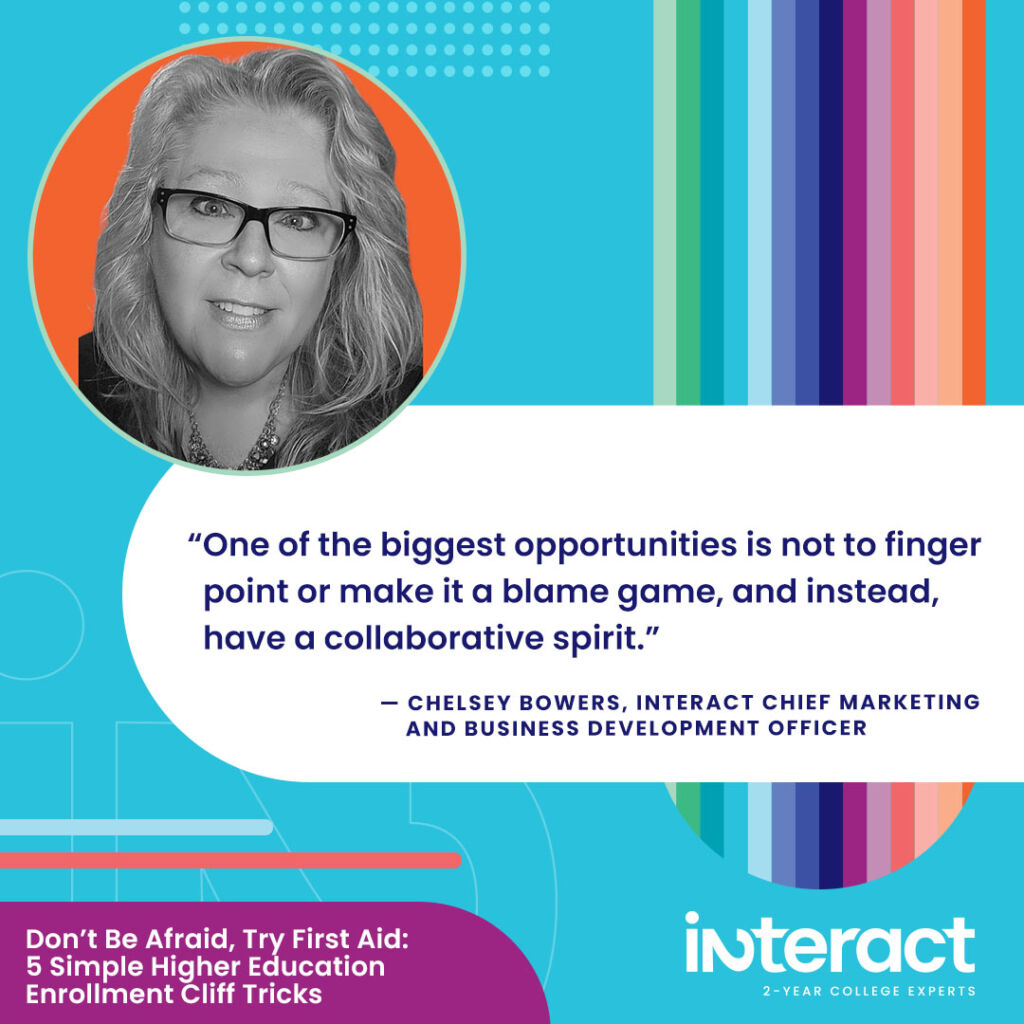
“One of the biggest opportunities is not to finger point or make it a blame game, and instead, have a collaborative spirit,” says our Chief Marketing and Business Development Officer, Chelsey Bowers.
To navigate the enrollment rapids, colleges must have highly functional teams with excellent alignment and agreement. Plus, the benefits of great collaborations go far beyond boosting enrollment.
“The more people you bring into actively solving problems, the more engaged they are, and the more satisfied they are,” says Walleser. “Team building helps with employee retention, which in turn benefits students with long-term, highly motivated staff and faculty. It’s a win-win.”
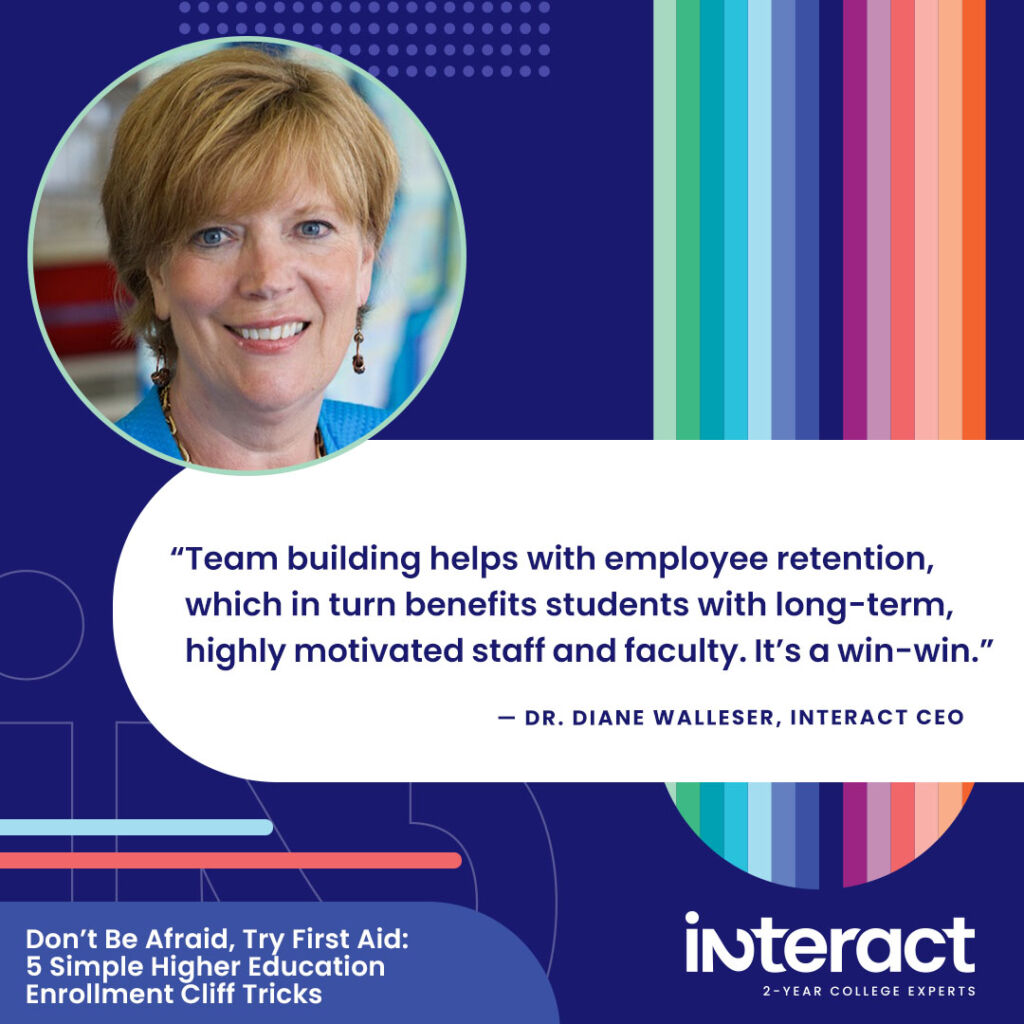
The Interact team recently did a campus visit with one of our partners, and our founder, Dr. Pam Cox-Otto, reminded everyone of how important team building really is:
“Pam’s last recommendation to the college was, ‘Be nice to each other. It’s all you have,’” recalls Walleser.

Your team is your support network, your life vest, and your rowing crew. With so much stress in the air, Walleser says it’s paramount to find the common ground to solve student experience challenges. “Otherwise, we see so much energy being wasted.”
We talk a lot about how important it is to create a sense of belonging with your students to ensure retention. That sense of belonging is also critical in your staff, from your leadership to your faculty members.
Speaking of creating a sense of belonging …
3. How Can Your College Be More Welcoming?
The key to building better onboarding, retention, and persistence is building a better relationship with students. Beyond looking at your student data and fixing onboarding and enrollment leaks, where can you improve the sense of community?

“Colleges are failing to create a personal connection with students, which is sending people away,” says Walleser. “If students are disenfranchised, they won’t come back.”
Part of the issue is our messaging. If communications are only warm when reaching out to prospects but turn cold and transactional once they are students, then we fail to build a real connection.
“Take academic probation,” says Walleser. “The very name scares people. Students think it’s a life sentence, and then they stop out and never come back.”

For example, California State University, Fullerton renamed “academic probation” to “academic notice,” helping students feel that they weren’t being punished. According to the Inside Higher Ed article, “University officials say the new term has gone a long way toward making students, especially students of color, feel less stigmatized.”
Similarly, our CEO says, “We need to promote a growth mindset among learners and encourage at-risk students.”

4. Where Can You Build in Quick Wins?
“Quick wins are important in our enrollment first aid kit,” says Kasper. “What can we put in motion that shows immediate effects?”
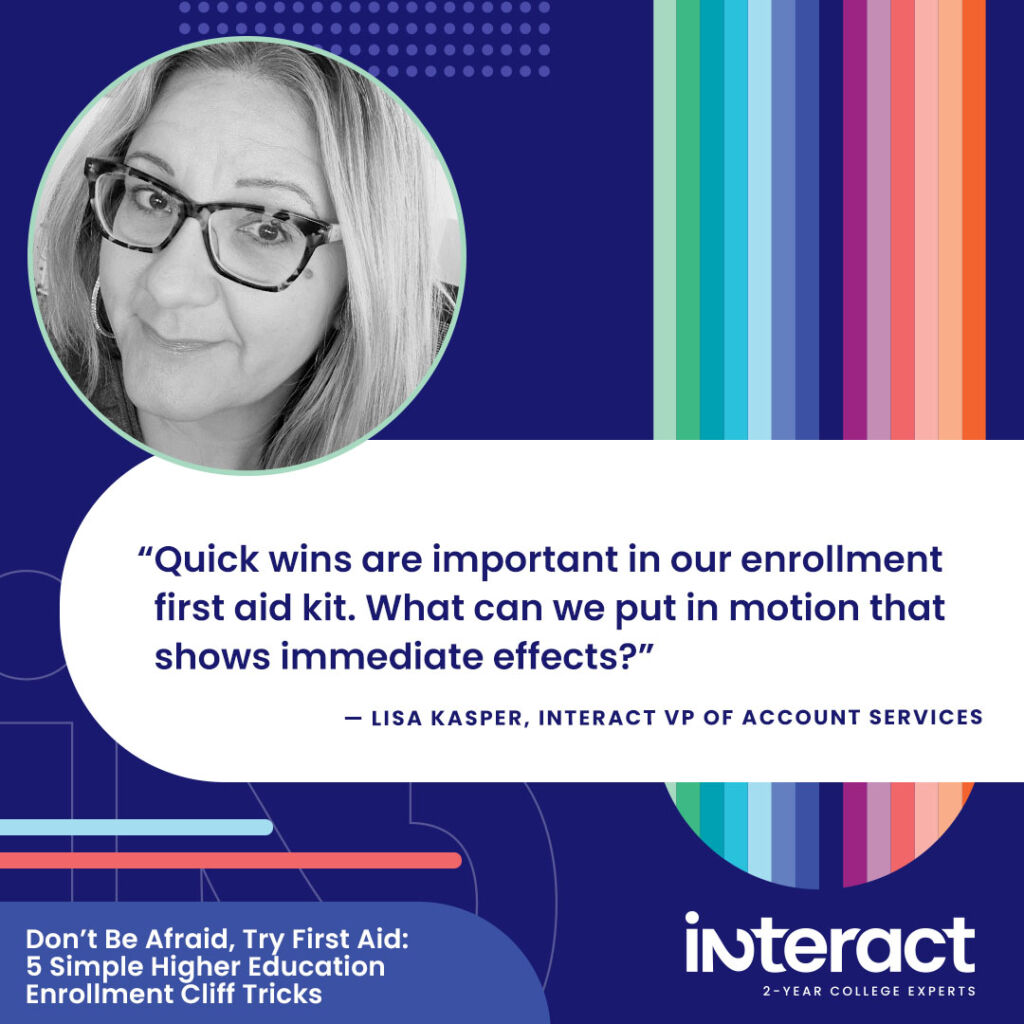
Your quick win might be small, but small changes can add up over time into big results. Take Kellogg Community College’s SEM team. At first, morale was low. After a marked enrollment decline, the Higher Learning Commission required the college to submit a comprehensive enrollment management plan.
But the college took the challenge as an opportunity and teamed up with Interact Communications to get a bird’s-eye view of its enrollment pipeline. With proper perspective and a new plan in place, KCC realized gains right away in improved student experience, securing outstanding alignment and agreement between departments, and making data-driven decisions to focus efforts.
Small Successes, Big Changes: How Quick Wins Can Help Offset the Higher Education Enrollment Cliff
Often, when a college can step back and get the big picture of the institution with fresh data, it’s simple to spot and address easy fixes. For KCC, a quick fix that didn’t require any additional costs was clearing up confusing class registration jargon.
“When a class is reserved for certain students, it said ‘petitioned,’ and nobody knew what that meant,” recalls KCC Director of Admissions Jenni Kotowski, who previously had to field many confused student calls on the issue. As soon as the college changed that term to “restricted,” the phone lines got a lot quieter.
KCC’s many wins added up, ultimately resulting in a +12% enrollment boost in fall 2023!
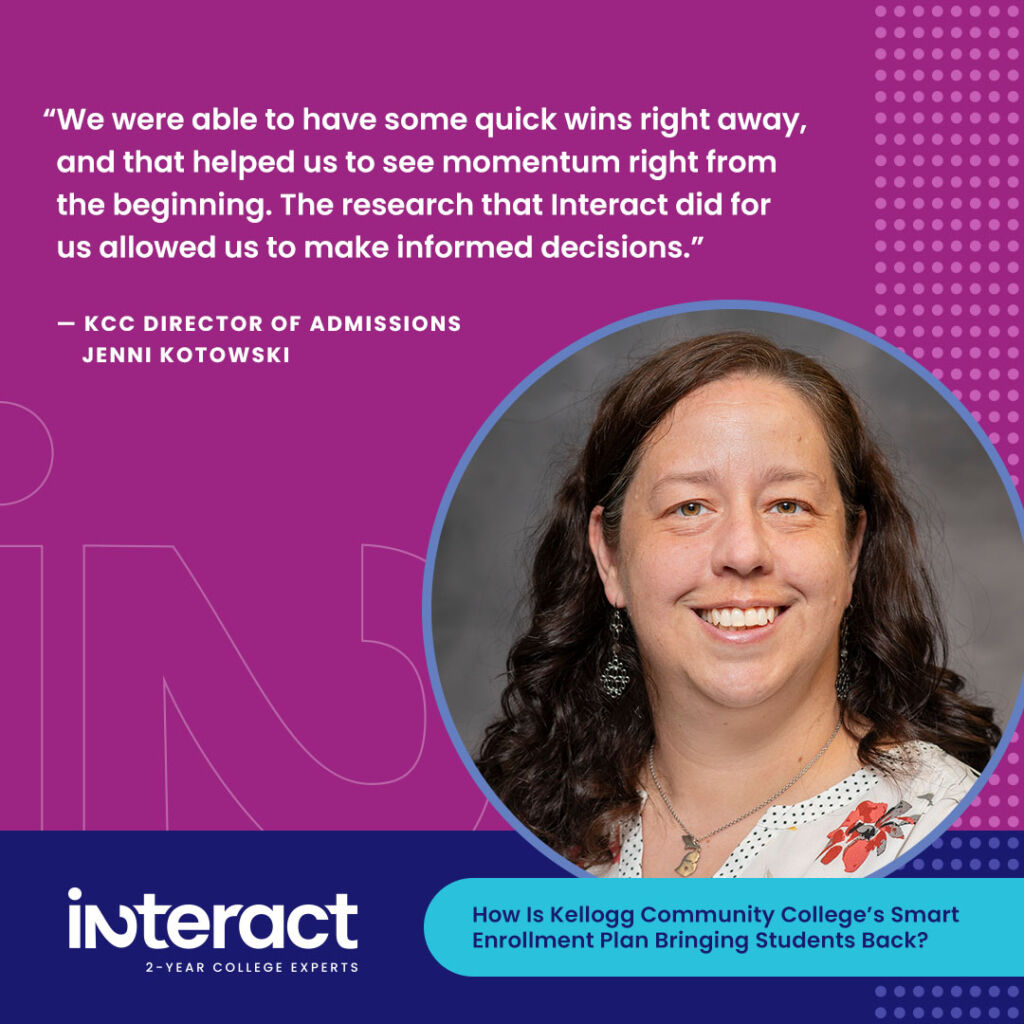
Once you pull your team together and use your data to help you focus on top priorities, what quick wins can your college earn to start moving the needle in the right direction? Not only does a quick win build team spirit, but it also can snowball into big enrollment gains!
5. Say No to Silos and Hone Your Priorities
We all know alignment and agreement are critical, but gaining it is often easier said than done. Every division in the college has its own priorities. Sometimes, cross-functional teams have trouble working together because they can’t all agree on the priorities.
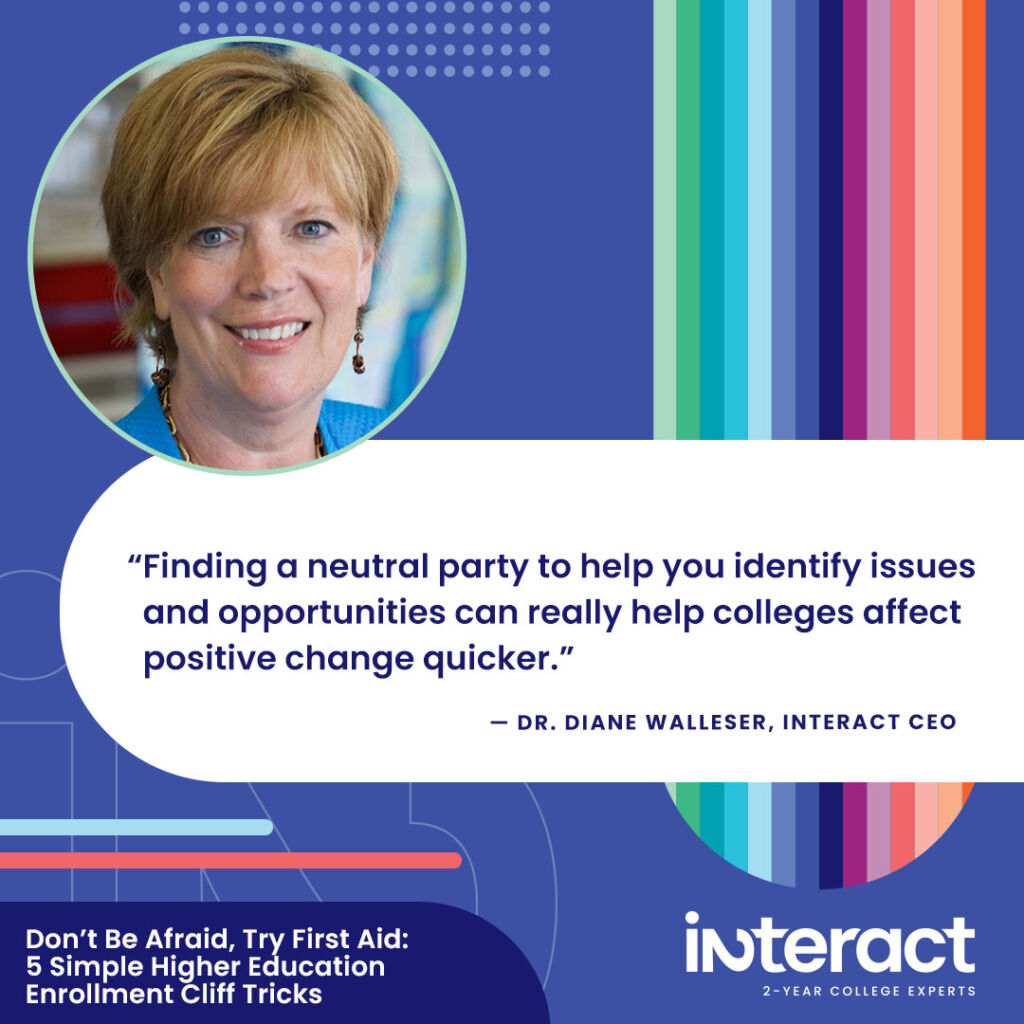
That’s why our CEO says, “Finding a neutral party to help you identify issues and opportunities can really help colleges affect positive change quicker.”
For example, we help our partners with issues-and-opportunities scans, which allow colleges to come together, gain alignment and agreement, and determine the top pain points and opportunities to tackle.
“That way, colleges don’t have to waste time negotiating for six or eight months to get important items on the priority list,” says Walleser. “That’s precious time that would be better spent serving your students.”
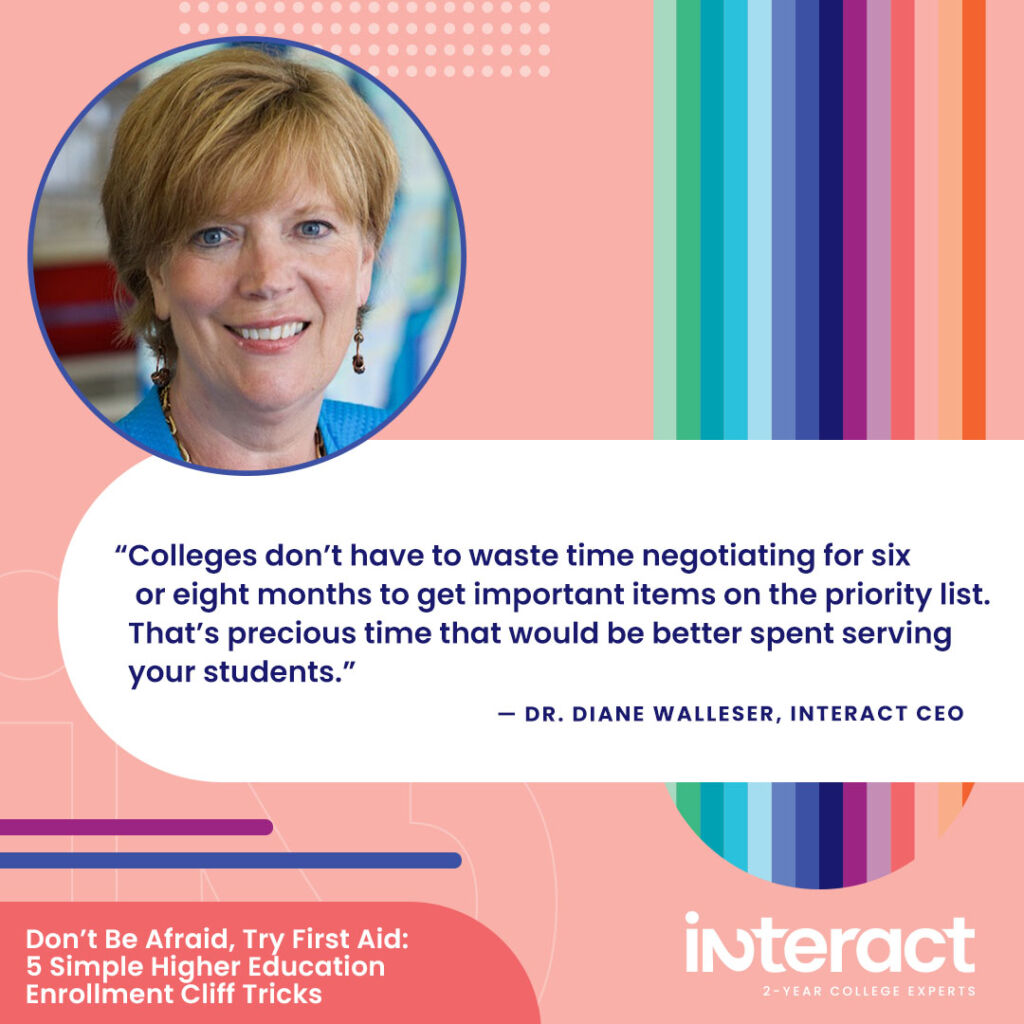
Having a neutral party helping your departments collaborate can be a game-changer. Want to learn more? Reach out for a free consultation, and let’s start problem-solving together!



